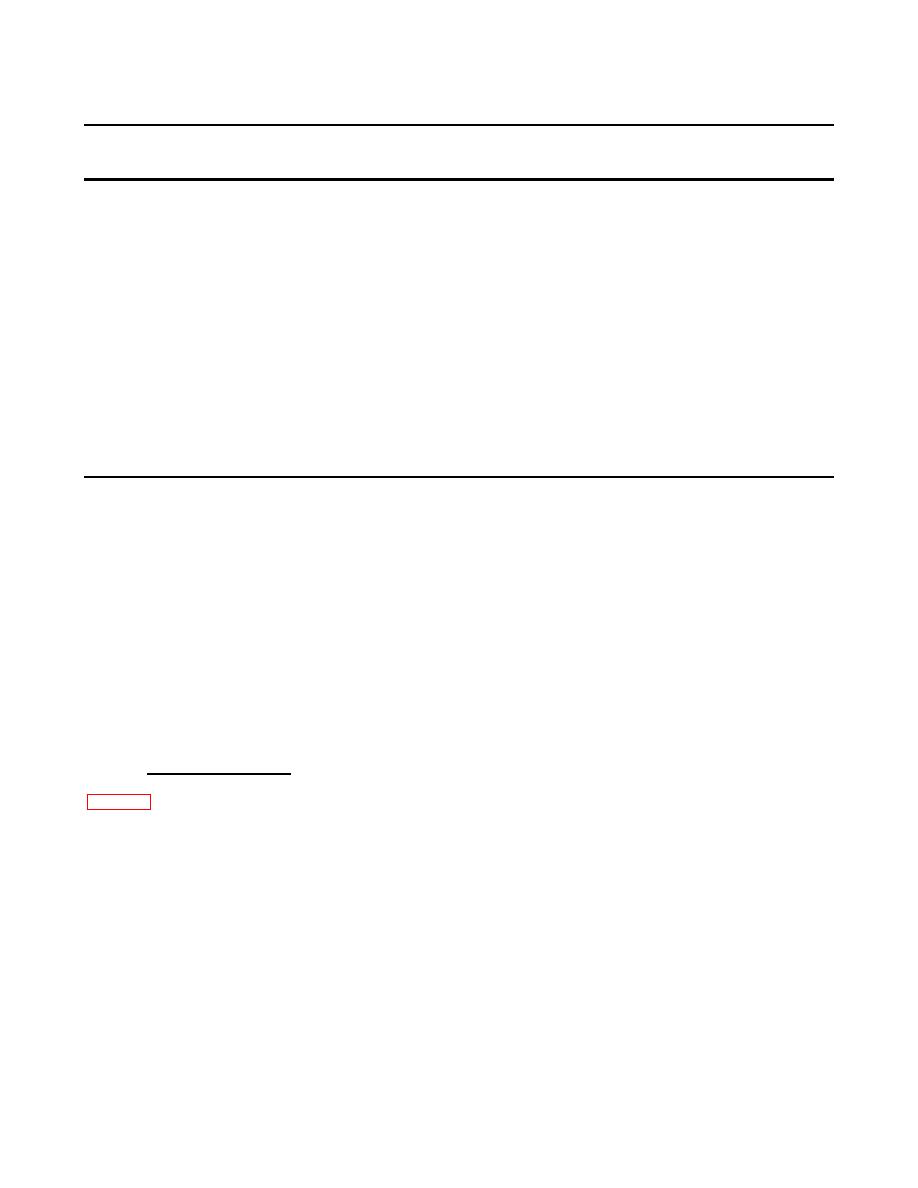
| Tweet |

Custom Search
|
|

|
||
 TM 55-1905-223-24-1
Table 1-1. Equipment Data-CONT
Characteristics
Reference Data
EXHAUST SYSTEM
Maximum allowable back pressure imposed
by piping and silencer
3 in Hg (75 mm Hg)
Exhaust pipe size (normally acceptable
inside diameter
6 in (152 mm)
FUEL SYSTEM
Engine idle speed
725 to 775 rpm
Maximum allowable restriction to pump:
With clean filter
4 in Hg (100 mm Hg)
With dirty filter
8 in Hg (200 mm Hg)
Maximum allowable fuel return line
2.5 in Hg (63 mm Hg)
restriction
1-10.
Safety, Care, and Handling. Safety precautions must be observed at all times while performing
maintenance. General WARNINGS and first-aid data appear in the front of this manual. Review all safety
information before starting any task. Carefully read through an entire maintenance procedure before
performing any maintenance function. Make sure the task can be done safely. All WARNINGS, CAUTIONS,
and NOTES are of great importance to your safety and the safety of the equipment.
SECTION III. PRINCIPLES OF OPERATION
1-11.
Diesel Engine Operation . Diesel engine operation is different from spark-ignited engine operation.
Compression ratios are higher and the charge taken into the combustion chamber during the intake stroke
consists of air only, with no fuel mixture. Injectors receive low-pressure fuel from the fuel system and deliver it
into individual combustion chambers at the proper time, and in the right quantity and atomized condition for
burning. Ignition of fuel is caused by heat of compressed air in the combustion chamber.
a.
Diesel Engine Cycles. The diesel engine four stroke combustion cycle consists of four piston strokes.
The four strokes happen in this order: intake stroke, compression stroke, power stroke, and exhaust stroke
(FIG. 1-2). In order for the four strokes to function properly, valves and injectors must act in direct relation to
each of the four strokes of the piston. The intake valves, exhaust valves, and injectors are camshaft actuated,
linked by tappets or cam followers, push rods, rocker levers, and valve crossheads. The camshaft is driven by
the crankshaft gear, and that means rotation of the crankshaft drives the camshaft, which then controls the
opening and closing sequence of the valves and injection timing (fuel delivery).
1-7
|
||
 |
||